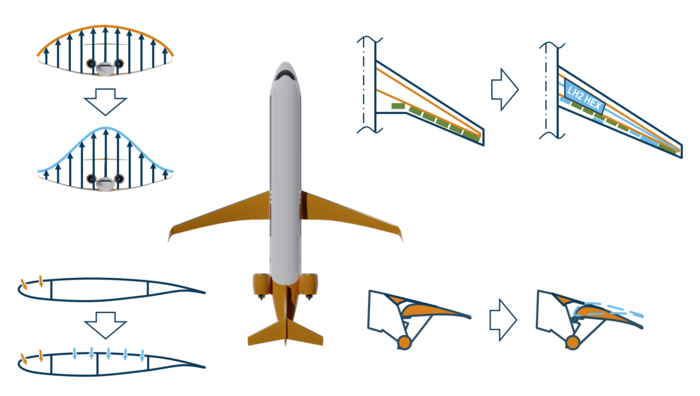
Airframe & Systems Design
Michael.Luedemann[at]bauhaus-luftfahrt.net
+49 (0) 89-30 74-84926
The DWiTE project focuses on the wing design in regard of liquid hydrogen as a promising energy source for commercial aircraft meeting future global climate targets.The wing is heavily influenced when utilizing hydrogen, as it is no longer feasible to store fuel in it, unlike in conventional wings.
The introduction of a so-called dry wing presents both new possibilities and unique challenges in wing design, prompting a need for meticulous investigation and optimization. For example, one drawback that needs to be compensated for is the lack of relief due to the fuel weight in the wings once the aircraft is airborne, for instance, by exploiting the new available space to integrate (novel) systems or by applying different lift distributions or primary structure concepts. DWiTE is dedicated to assessing the potential of dry wings holistically, focusing on aerodynamics, structural design, systems integration, and the synergistic effects of the investigated technology bricks. Additionally, a strong focus is put on the overall aircraft design, tying everything together. This potential assessment, backed by the development of simulation methods and methodologies, accelerates the knowledge gain and technological maturity with regard to hydrogen-powered aircraft.
Bauhaus Luftfahrt is the coordinator of the project and responsible for following tasks:
- selection of a reference aircraft, the subsequent design of a basic hydrogen-powered aircraft, and the derivation of a high-aspect-ratio wing.
- lead of several work packages and support in many ways, such as in the preliminary design of aircraft and in technology assessment.
- primary structure concepts and alternative lift distributions.

The project is funded by the Federal Ministry for Economic Affairs and Climaty Action of Germany under the funding code 20E2208A.

